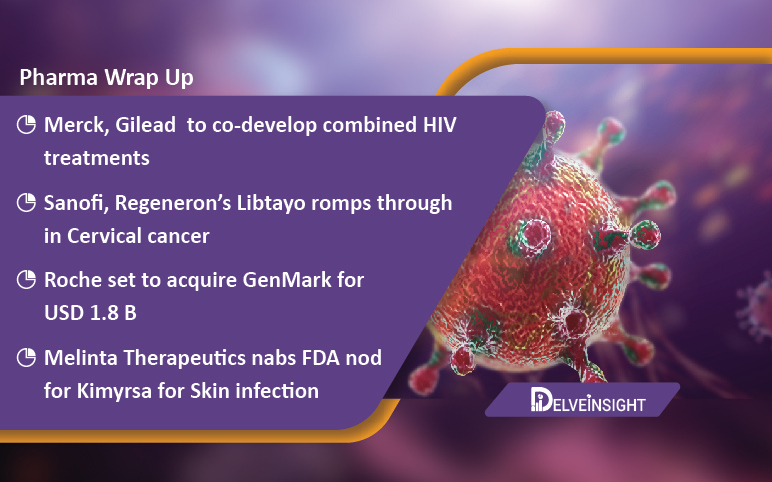
Pharma Companies Foray into the ABSSSI Market to Develop Novel Antibiotics and Tackle Antibiotic Resistance

May 06, 2019
A skin and skin structure infection (SSSI), also referred to as acute bacterial skin and skin structure infection (ABSSSI) or skin and soft tissue infection (SSTI), is a bacterial infection of the skin and associated soft tissues. These are the common infections of epidermis, dermis, loose connective tissue, mucous membranes, and subcutaneous tissues. Earlier it used to be categorized into complicated skin and skin structure infection and uncomplicated skin and skin structure infection. According to the U.S. Food and Drug Administration (FDA), the uncomplicated category includes simple abscesses, impetiginous lesions, furuncles, and cellulitis mainly caused by Staphylococcus aureus and Streptococcus pyogenes. The complicated category includes infections either involving deeper soft tissue or requiring significant surgical intervention, such as infected ulcers, burns, and major abscesses or a significant underlying disease state that complicates the response to treatment. However, since 2008, FDA restored to calling it Acute Bacterial Skin and Skin Structure Infection (ABSSSI). The Infectious Diseases Society of America (IDSA) preferred the term “skin and soft tissue infection”.
The centrepiece for Acute Bacterial Skin and Skin Structure Infection (ABSSSI) treatment at present remains Antibiotics. For effective treatment, broad-spectrum antibiotics are administered. But increasing Ant-microbial resistance among both Gram-positive and Gram-negative bacteria especially in methicillin-resistant Staphylococcus aureus (MRSA) has led to not only in treatment-failures and poor prognosis but also in accelerating the treatment-cost. This ultimately has resulted in an increase in ABSSSI incidence.
As per Delveinsight’s analysis, the total 7MM ABSSSI Incident cases in 2017 were 7,259,777, out of which the highest was seen in the United States. In the United States, it is estimated that more than 15 million bacterial skin and skin structure infections occur, resulting in serious indisposition. DelveInsight analyzed that there were 1,942,229 male patients and 1,406,442 female cases suffering from ABSSSI in 2017 in the United States. As per Kaye et al. a total of 1.8% of hospital admissions between 2005 and 2011, were for adult patients with an SSSI primary diagnosis.
ABSSSI therapeutic management is based on a multidisciplinary approach. Eradication of the causative organism, alleviation of signs and symptoms, avoidance of complications and preventing recurrences are the main goals of ABSSSI therapy. Treatment for ABSSSI usually includes antimicrobial therapy, surgical drainage, and antibiotic therapy. The therapeutic approaches favoured in treating skin infections include adjunctive therapies, early and appropriate empiric antibiotic therapy, wound culture with susceptibility testing and surgical drainage and debridement. Adjunctive therapies comprise daily dressing changes, use of topical solutions including non-specific antimicrobial drugs, hyperbaric oxygen treatments, debridement, and surgical interventions planned at the initiation of treatment.
According to The Infectious Diseases Society of America (IDSA) guidelines for the treatment of skin and soft tissue infections in 2014, the treatment of typical cases of cellulitis (a major subtype of ABSSSI) includes an oral antibiotic with activity against streptococci. Primary treatment options for mild cases of non-purulent infections include penicillin, amoxicillin, amoxicillin-clavulanate, dicloxacillin, cephalexin, and clindamycin. Oral and intravenous options for the treatment of ABSSSIs with activity against MRSA include several longstanding therapies, such as sulfamethoxazole–trimethoprim, clindamycin, minocycline, doxycycline, vancomycin, daptomycin, linezolid, ceftaroline, and telavancin. Antibiotics with activity against MRSA are considered when the infection is associated with penetrating trauma, such as IV drug use.
Antibiotic therapy was relatively straightforward before the spread of methicillin-resistant Staphylococcus aureus (MRSA) in skin infections. With the emergence of MRSA in the community setting, initial ABSSSI therapies have been modified and readdressed. Dalvance developed by Durata Therapeutics, The Medicines Company’s Orbactiv and Sivextro of Cubist Pharmaceuticals are some of the few drugs that have been approved or are currently in development for ABSSSI treatment that also proved to be efficient against MRSA. Both Dalvance and Orbactiv have a long half-life and can be dosed less frequently. In conclusion, characteristics of long-acting antibiotics can be a viable option for ABSSSI treatment and can profoundly modify the management of these infections by reducing or eliminating both costs and risks of hospitalization.
Another approved drug Baxdela developed by Melinta Therapeutics is a novel fluoroquinolone. Accessible intravenously and as oral formulations, it is characterized by an increased efficacy in acidic environments and activity on bacterial biofilm. Baxdela displays an enhanced in vitro activity against MRSA, and enterococci while maintaining efficacy against gram-negative pathogens and anaerobes.
Article in PDF
As already stated treatment of ABSSSI is quite thought-provoking. However, improved perception of the ABSSSI, and recent, and extensive research in the area of the development of novel drugs increase the understanding of the related comorbidities, along with a large number of upcoming pipeline drugs, is expected to create a lucrative environment for the growth of ABSSSI treatment market. Treatment approaches for ABSSSI are expected to witness dynamic growth in the future due to the anticipated launch of new product approvals.
Article in PDF


